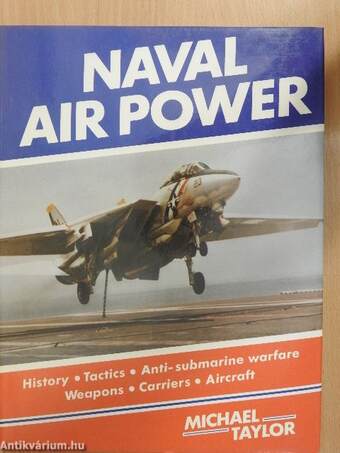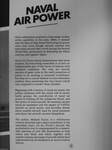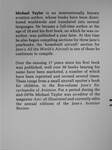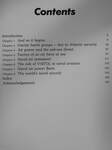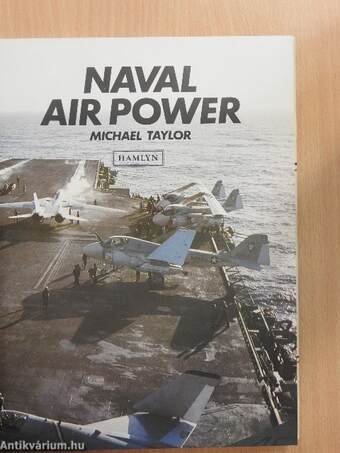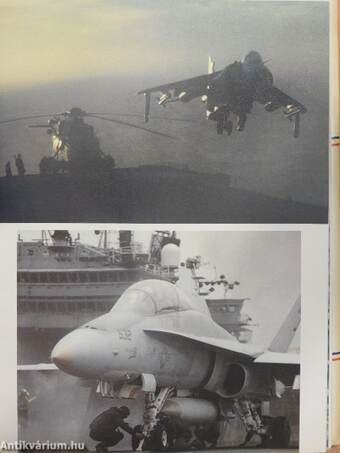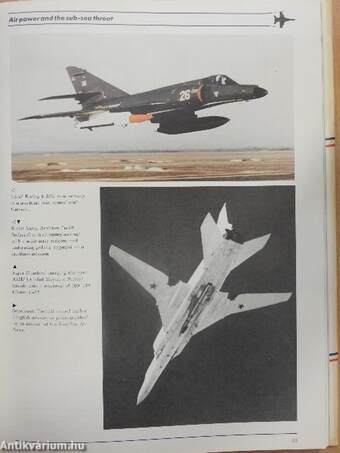1.117.584
kiadvánnyal nyújtjuk Magyarország legnagyobb antikvár könyv-kínálatát
Naval Air Power
History, Tactics, Anti-submarine warfare, Weapons, Carriers, Aircraft
| Kiadó: | Hamlyn Publishing |
|---|---|
| Kiadás helye: | London |
| Kiadás éve: | |
| Kötés típusa: | Fűzött kemény papírkötés |
| Oldalszám: | 192 oldal |
| Sorozatcím: | |
| Kötetszám: | |
| Nyelv: | Angol |
| Méret: | 29 cm x 22 cm |
| ISBN: | 0-600-50115-9 |
| Megjegyzés: | Színes és fekete-fehér fotókkal, illusztrációkkal. |
naponta értesítjük a beérkező friss
kiadványokról
naponta értesítjük a beérkező friss
kiadványokról
Fülszöveg
Once submarines acquired a long-range nuclear strike capability in the early 1960s, it seemed that the days of ship-borne fixed-wing air power were over, even though aircraft carriers had more than proved their worth during the Second World War, particularly in defending the Allied convoys and against Japan.-
Naval Air Power clearly demonstrates that naval aviation, far from being outmoded, is, in fact, an indispensable part of the forces of nations with extensive coastlines. Not only are aircraft carriers of great value in the swift projection of power to an existing or potential troublespot, but they are a crucial element in anti-submarine warfare, thus countering the very threat which was supposed to render them obsolete.
Beginning with a history of naval air power, the author continues with the attack role of carrier battle groups, the contribution of naval air power in fending off the submarine threat, and the tactics of naval aircraft. He assesses current naval air... Tovább
Fülszöveg
Once submarines acquired a long-range nuclear strike capability in the early 1960s, it seemed that the days of ship-borne fixed-wing air power were over, even though aircraft carriers had more than proved their worth during the Second World War, particularly in defending the Allied convoys and against Japan.-
Naval Air Power clearly demonstrates that naval aviation, far from being outmoded, is, in fact, an indispensable part of the forces of nations with extensive coastlines. Not only are aircraft carriers of great value in the swift projection of power to an existing or potential troublespot, but they are a crucial element in anti-submarine warfare, thus countering the very threat which was supposed to render them obsolete.
Beginning with a history of naval air power, the author continues with the attack role of carrier battle groups, the contribution of naval air power in fending off the submarine threat, and the tactics of naval aircraft. He assesses current naval air armament and the impact of V/STOL aircraft on naval power, and provides details about notable aircraft used for naval purposes and about the aircraft carriers themselves.
The author, Michael Taylor, is a well-known aviation histórián and a major contributor to the unrivalled Jane's All the World's Aircraft. His authoritative text is complemented by a remark-able selection of over 200 illustrations in both colour and black and white, together with superb cutaway drawings of aircraft which have represented key developments in naval aviation history.
Michael Taylor is an internationally known aviation author, whose books have been distri-buted worldwide and translated into several languages. He became a full-time author at the age of 18 and his first book, on which he was co-author, was published a year later. At this time he alsó began compiling sections for three Jane's yearbooks; the 'homebuilt aircraft' section for Jane's Ali the World's Aircraft is one of these he continues to compile.
Over the ensuing 17 years since his first book was published, well over 50 books bearing his name have been marketed, a number of which have been reprinted and revised several times. These rangé from a small aircraft spotter's book for children, to the five-volume Jane's En-cyclopedia of Aviation. For a period during the mid-1970s Michael Taylor was co-editor of the magaziné Aircraft Illustrated and currently edits the annual editions of the Jane's Aviatior Review. Vissza
Témakörök
- Idegennyelv > Idegennyelvű könyvek > Angol > Műszaki
- Idegennyelv > Idegennyelvű könyvek > Angol > Történelem > Egyéb
- Történelem > Idegennyelvű > Angol
- Történelem > Hadtörténet > Fegyverek, fegyvernemek
- Műszaki > Idegennyelv > Angol
- Műszaki > Hadászat, hadtörténet
- Műszaki > Közlekedés > Repülés > Repülők
- Műszaki
Michael Taylor
Michael Taylor műveinek az Antikvarium.hu-n kapható vagy előjegyezhető listáját itt tekintheti meg: Michael Taylor könyvek, művekMegvásárolható példányok
Nincs megvásárolható példány
A könyv összes megrendelhető példánya elfogyott. Ha kívánja, előjegyezheti a könyvet, és amint a könyv egy újabb példánya elérhető lesz, értesítjük.


